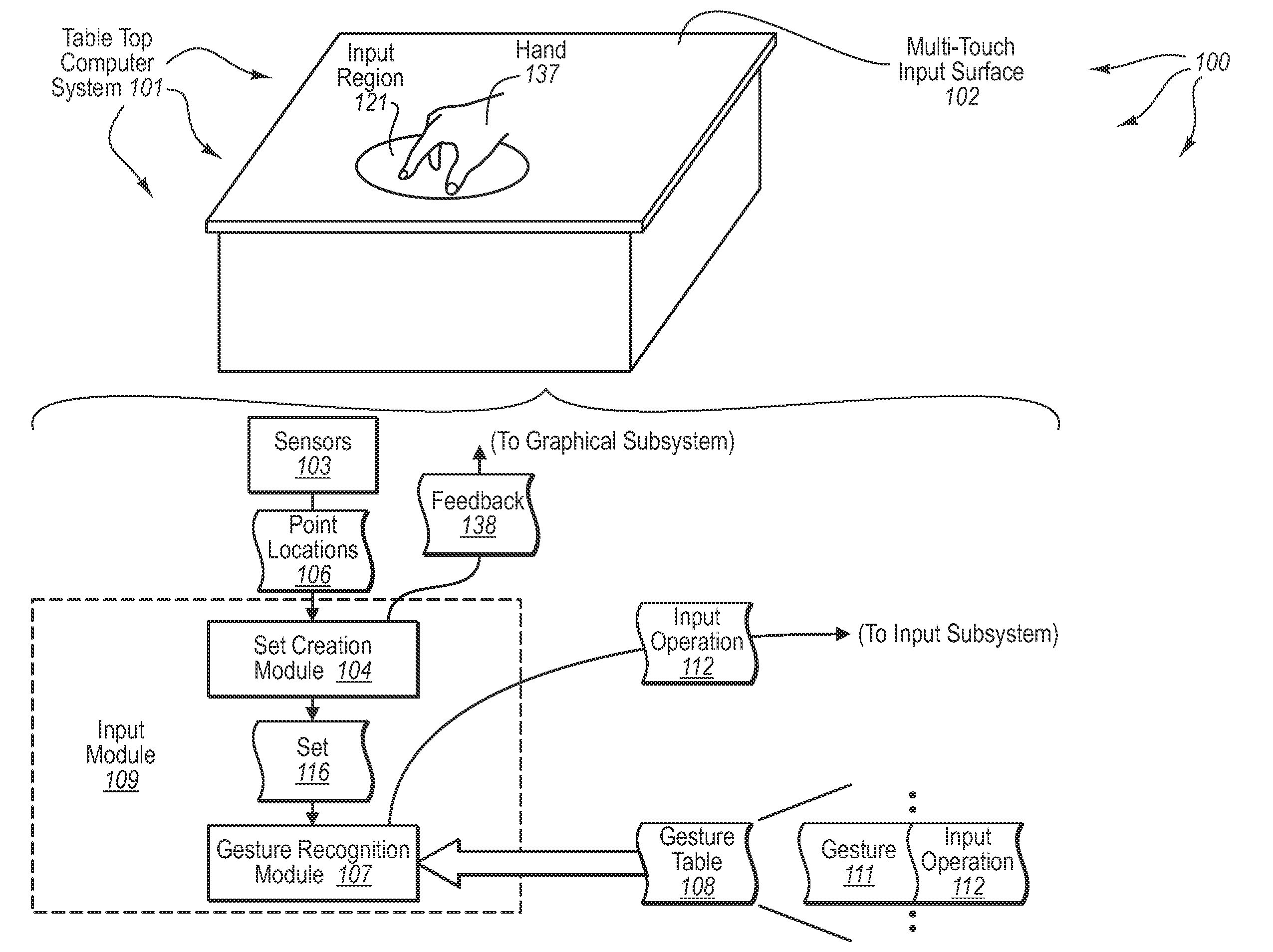Recognizing multiple input point gestures
a gesture recognition and input technology, applied in the field of multiple input point gesture recognition, can solve the problems of occupying a portion of the display surface of the existing display device, limiting the use of existing display devices, and crowded existing display areas
- Summary
- Abstract
- Description
- Claims
- Application Information
AI Technical Summary
Problems solved by technology
Method used
Image
Examples
Embodiment Construction
[0025]The present invention extends to methods, systems, and computer program products for recognizing multiple input point gestures. A computer system including a multi-touch input surface receives an ordered set of points. The ordered set of points indicates that contact between an object and the multi-touch input surface was detected at a first location on the multi-touch input surface. The ordered set of points also indicates that contact between an object and the multi-touch input surface was detected at a second location on the multi-touch input surface simultaneously with the detected contact at the first location and subsequent to detecting contact with the multi-touch input surface at the first location. The ordered set of points also indicates that contact between an object and the multi-touch input surface was detected at a third location on the multi-touch input surface simultaneously with the detected contact at the first location and at the second location and subseque...
PUM
 Login to View More
Login to View More Abstract
Description
Claims
Application Information
 Login to View More
Login to View More - R&D
- Intellectual Property
- Life Sciences
- Materials
- Tech Scout
- Unparalleled Data Quality
- Higher Quality Content
- 60% Fewer Hallucinations
Browse by: Latest US Patents, China's latest patents, Technical Efficacy Thesaurus, Application Domain, Technology Topic, Popular Technical Reports.
© 2025 PatSnap. All rights reserved.Legal|Privacy policy|Modern Slavery Act Transparency Statement|Sitemap|About US| Contact US: help@patsnap.com



